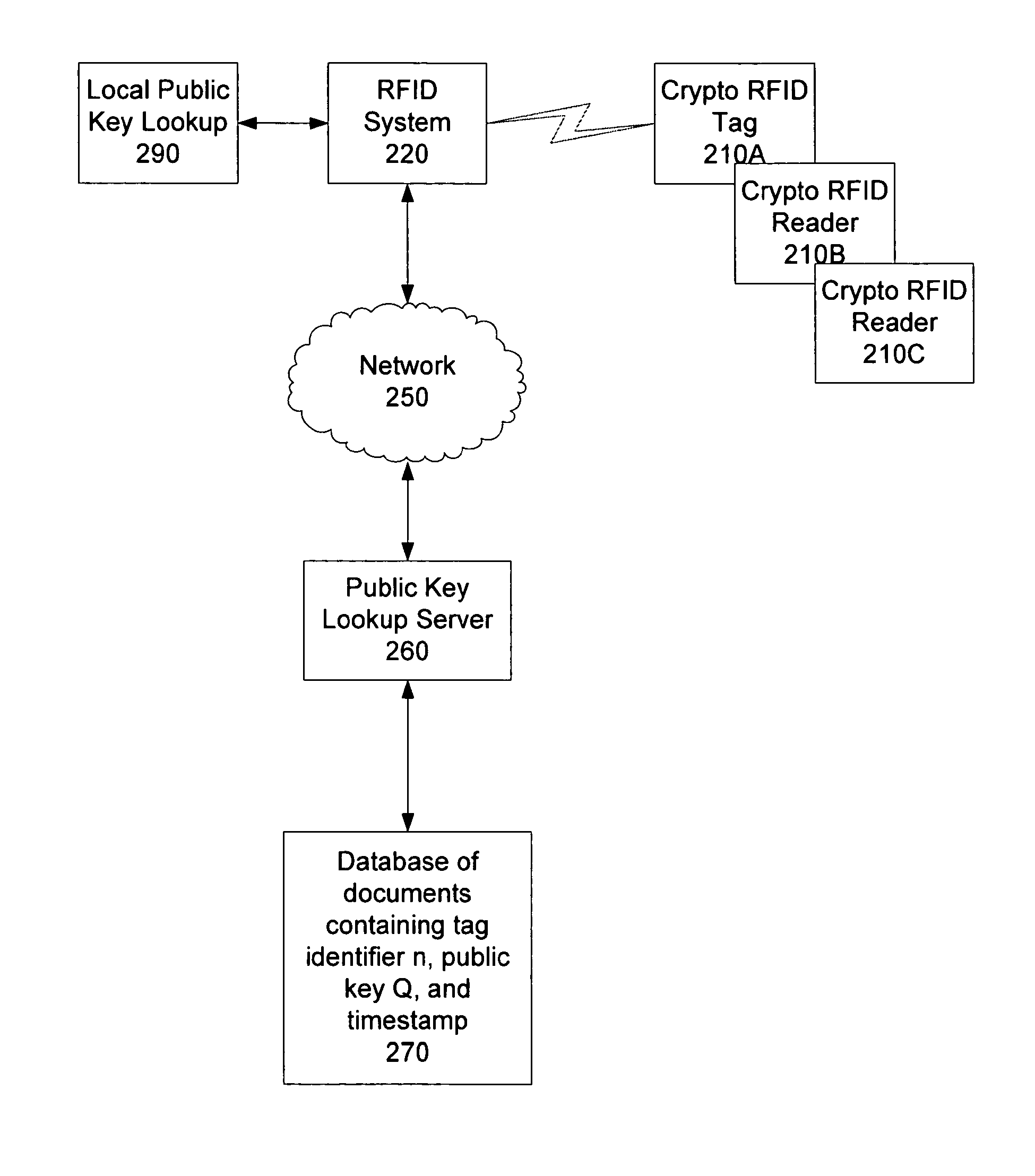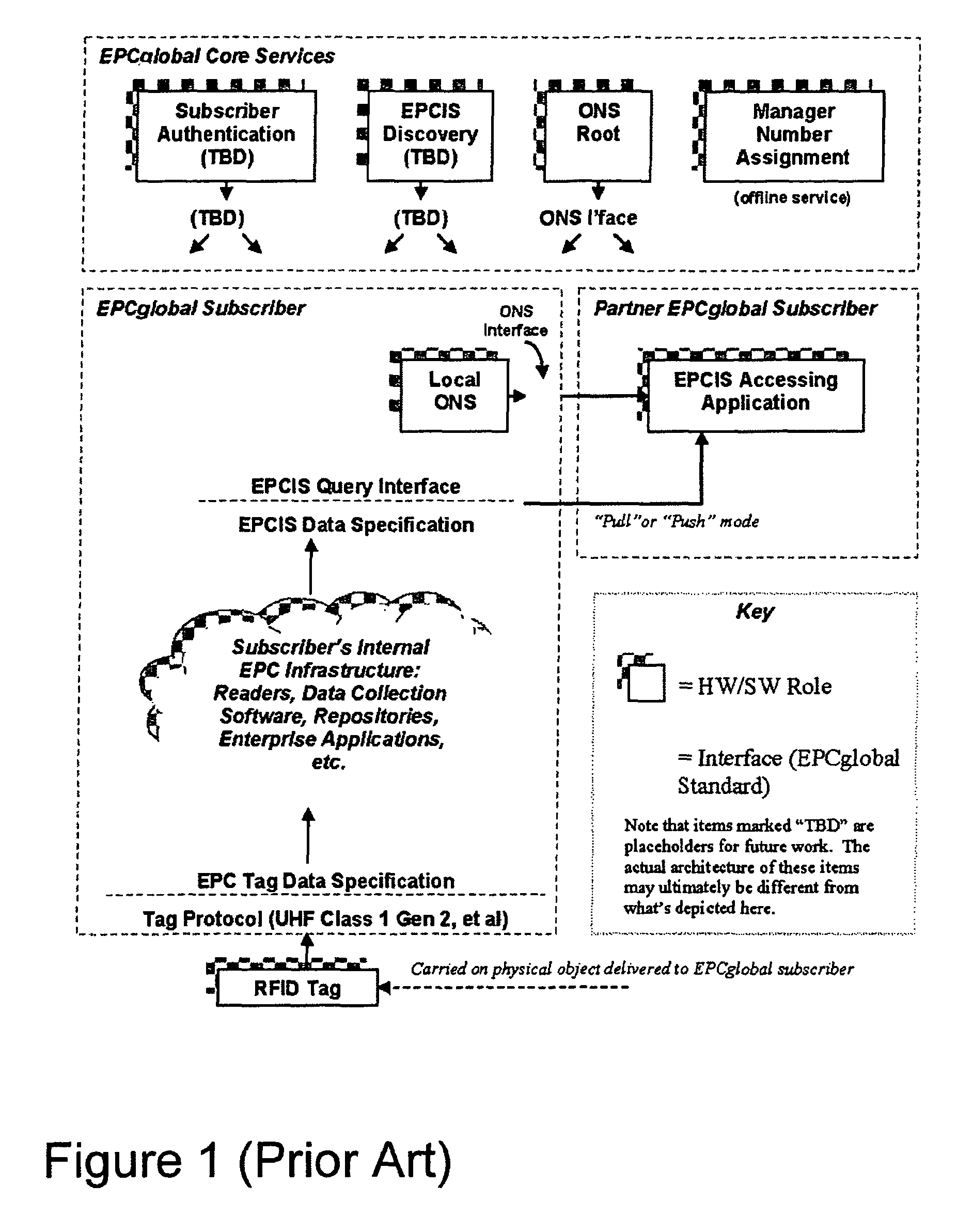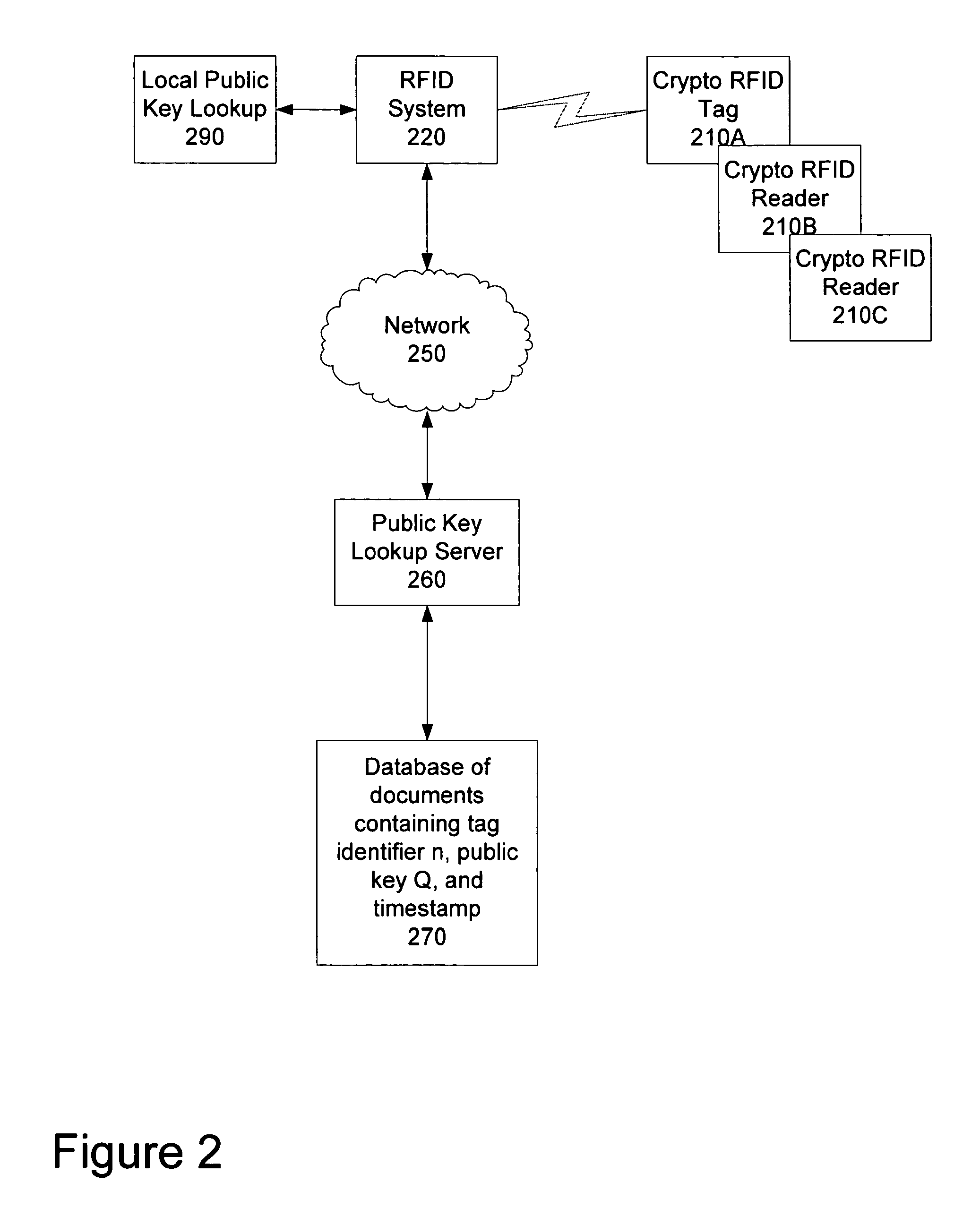Method and apparatus to provide public key authentication with low complexity devices
a public key and low-complex technology, applied in the field of authentication, can solve the problems of inability to use the rsa public key cryptography system and inability to electronically validate the authenticity of individual items
- Summary
- Abstract
- Description
- Claims
- Application Information
AI Technical Summary
Benefits of technology
Problems solved by technology
Method used
Image
Examples
Embodiment Construction
[0017]The method and apparatus described is a zero knowledge proof system which is sufficiently light-weight for limited processing power applications. For example, the authentication system may be implemented on RFID tags. Note that although in the discussion below the client-side of the authentication (i.e. the authenticating device) is referred to as RFID tags, alternative limited-processing power systems may also utilize the techniques described herein. For example, smart cards, cellular telephones, handheld devices, watches, or other devices having either limited memory or limited computational capability limited processing power may use these techniques. For simplicity, such devices will be referred to as low processing power systems (LPPS). The present technique is described using computations performed within a well known elliptic curve E over a finite field, F. (This is referred to as E(F).) The field may be an extension field of any prime number. In one embodiment, the fie...
PUM
 Login to View More
Login to View More Abstract
Description
Claims
Application Information
 Login to View More
Login to View More - R&D
- Intellectual Property
- Life Sciences
- Materials
- Tech Scout
- Unparalleled Data Quality
- Higher Quality Content
- 60% Fewer Hallucinations
Browse by: Latest US Patents, China's latest patents, Technical Efficacy Thesaurus, Application Domain, Technology Topic, Popular Technical Reports.
© 2025 PatSnap. All rights reserved.Legal|Privacy policy|Modern Slavery Act Transparency Statement|Sitemap|About US| Contact US: help@patsnap.com



